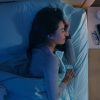Blue light has existed since the beginning of time, so why all the fuss now?
Before digital devices and curlicue (CFL) and LED light bulbs, the only source of blue light that we worried about was the sun. Blue light is now indoors and present on backlit devices and artificial lights, exposing our eyes to increasing levels of blue light. This increase is not what nature intended when we got the sun. This is artificial, humanmade light and it’s messing with our body’s delicate balance.
In fact, some studies show that the energy saving lights in our homes can have a more significant impact than regularly viewing our electronic devices.
According to Dr. Catherine Darley of The Institute of Naturopathic Sleep Medicine, “Blue light from electronics causes people sleep difficulties even though they might not realize it.”
Studies now show that blue light, such as the wavelengths emitted by cell phones, computers, tablets, TVs and compact fluorescent lights, suppresses our natural melatonin levels, which in turn makes our bodies think it’s not time to go to bed, but to stay up longer.
The body does an incredible amount of rest and repair during the crucial sleep phase. When people deprive themselves of sleep, a plethora of other medical conditions can set in. This may include depression, hormone imbalances, and other chronic illnesses.
The body’s complex, yet the perfect process for helping people sleep is simple. About an hour or two before bedtime, a small gland in the brain – known as the pineal gland – begins increasing the amount of a hormone called melatonin. Melatonin is what is responsible for making us sleepy, helping us wind down for the day. The body naturally begins to produce melatonin in response to if it is light or dark outside. This is why in Alaska when it is light nearly 18 hours a day, people use light blocking shades to help maintain a healthy circadian rhythm. This may also be why areas that are more significantly affected by the light/dark swing, such as those states further up north, have more people that suffer from SAD – Seasonal Affective Disorder. This can make people want to sleep more during the dark, winter months.
Blue light blocking glasses, such as BluTech Lenses, can help block these harmful blue light rays that keep our bodies in “wake” mode. It’s essential to use quality blue light blocking glasses that block 90 to 100% of harmful blue light. One study showed that adults that wore blue-light blocking glasses for three hours before going to sleep reported having better sleep quality and moods than the group that did not wear these glasses before bedtime.
If you are interested in learning more about blue light blocking glasses, view the article published by The Washington Post about how blue light impedes a good night’s sleep and why Americans are disrupting their normal circadian rhythm sleep cycle.
Find BluTech Near You




